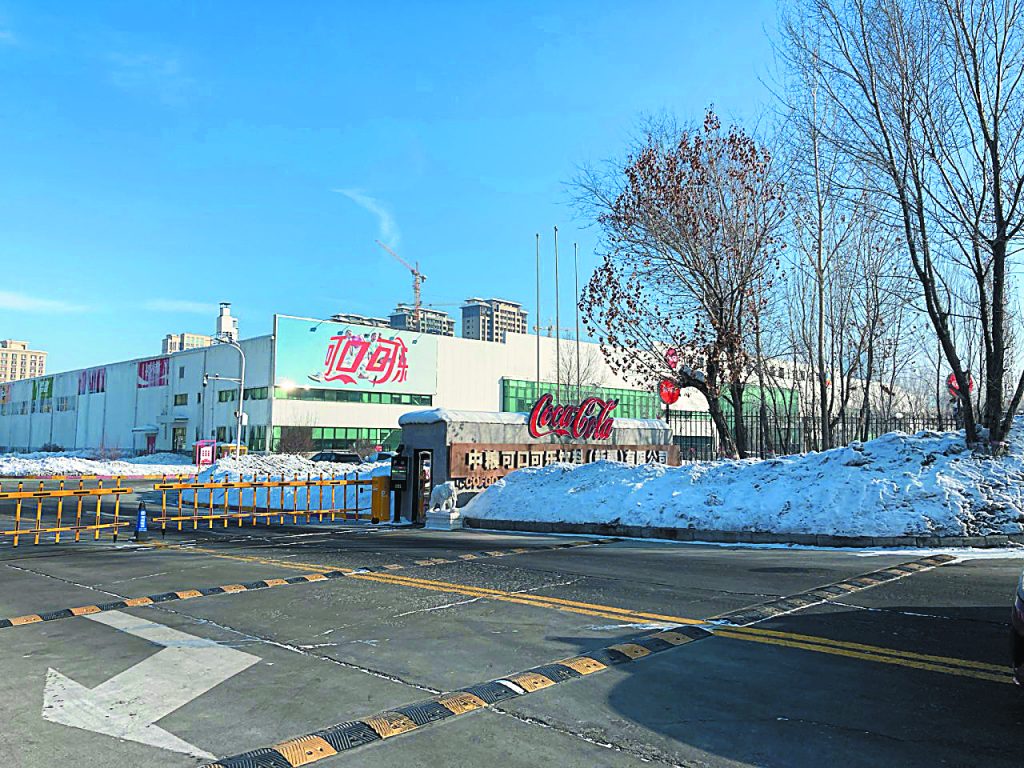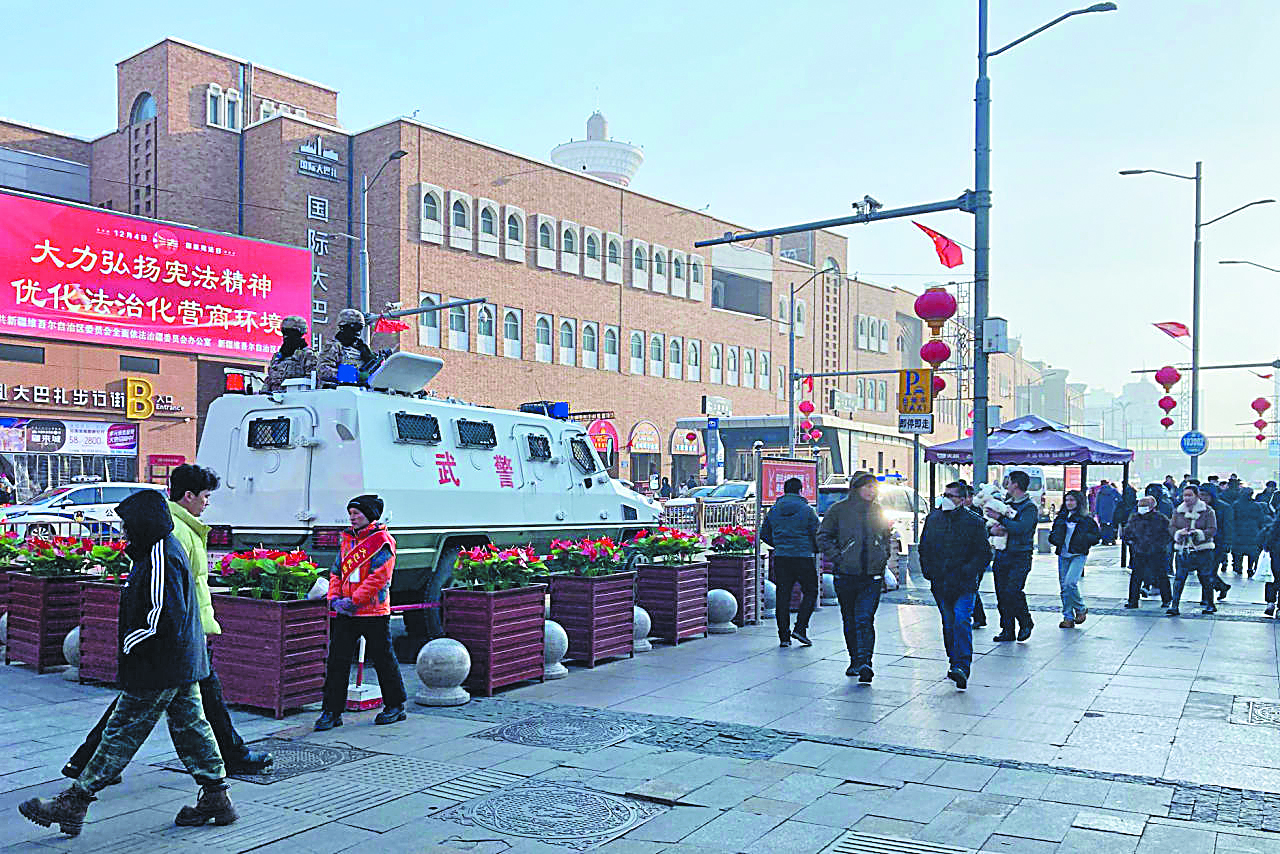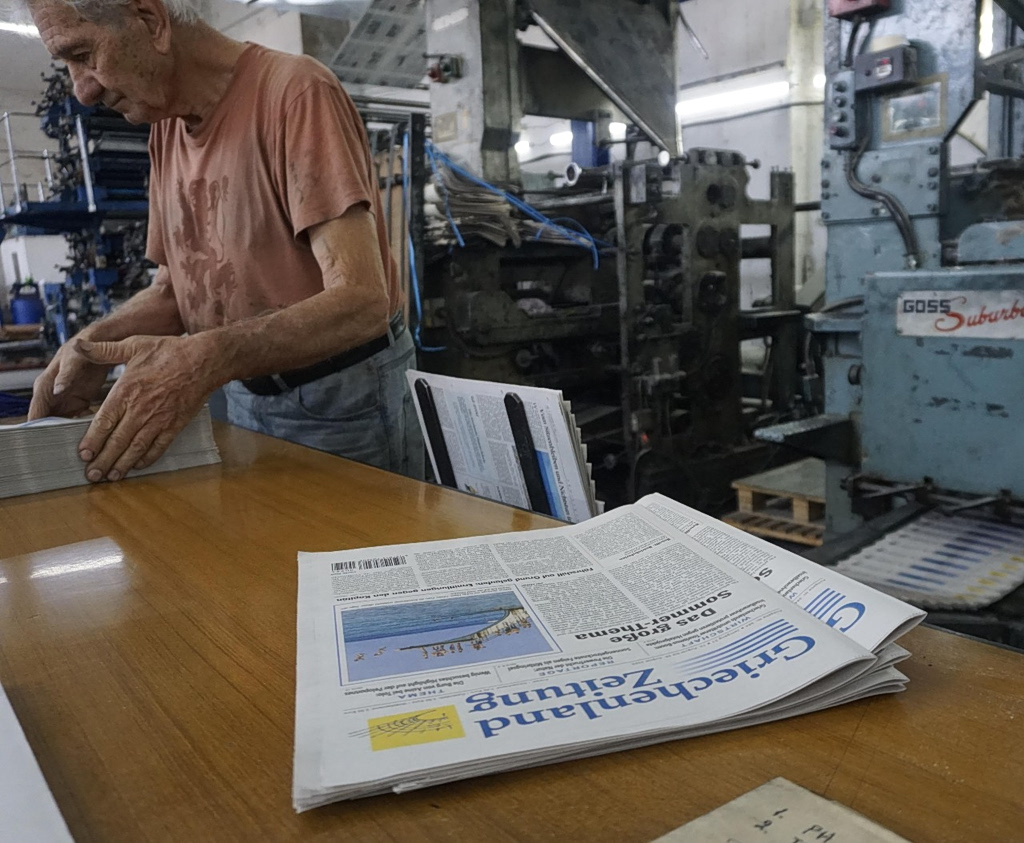URUMQI, China—About a decade ago, some Western companies answered Beijing’s calls to invest in Xinjiang, an underdeveloped region in the country’s remote west. Some were drawn by the natural resources there. Others eyed the political points they could score with China.
Today, many of those projects are dead or have been sold off. A visit by a Wall Street Journal reporter earlier this year to Urumqi, Xinjiang’s capital, found that the site of German carmaker Volkswagen —which was especially eager to invest in the region a little over a decade ago—sits lifeless. The factory, in Urumqi’s Toutunhe economic development zone, was recently sold. The carmaker and its joint venture partner SAIC Motor’s names have been scraped from the gate, leaving a blurry mark.
As the reporter approached the site and turned onto an empty side street, a white car trailed her movements—surveillance that continued throughout her trip in Urumqi.
The demise of what was the most prominent Western project there shows how toxic association with Xinjiang is for Western companies, and how those companies’ ambitions in China can collide with political and geopolitical realities. The investments into relatively minor projects in a remote area ended up morphing into a yearslong international headache.
Over the years, Xinjiang, home to millions of Turkic-speaking Uyghurs and other predominantly Muslim ethnic minorities, has become synonymous to some in the West with Beijing’s ruthless clampdown on ethnic minorities. The Chinese government has targeted the minorities in Xinjiang with mass-detention internment camps and omnipresent surveillance as part of a forcible assimilation campaign. China portrays the campaign as an effort to fight religious extremism and terrorists.
Since 2022, a U.S. law called the Uyghur Forced Labor Prevention Act—supported by Secretary of State Marco Rubio while he was a senator—has virtually banned imports from Xinjiang. In 2020, Beijing barred Rubio from entering China, partly in response to his criticism of the mass detention of Uyghurs in Xinjiang.
From clothing companies to automakers, businesses have shunned Xinjiang.
“Xinjiang has not only become a place not to invest, but even bidding on projects there or otherwise selling into the market there has become off limits,” said William Zarit, a senior counselor at business consulting firm Cohen Group and a former chairman of the American Chamber of Commerce in China.
China uses Xinjiang to signal Beijing’s discontent with governments. In February, as the U.S. and China ratcheted up their trade war, Beijing placed PVH, the owner of Calvin Klein and Tommy Hilfiger, on an “unreliable entities list” over allegations that it boycotts cotton products from Xinjiang. PVH said it complied with relevant laws and regulations and was working to find a positive resolution.
The Western opprobrium continues to sting Beijing. A senior Xinjiang official said in January that U.S. sanctions had hit operations at more than 100 local companies and resulted in layoffs. “The U.S.’s unreasonable actions are essentially aimed at undermining Xinjiang’s prosperity and stability, containing China’s development, and violating international trade rules and market order,” a spokesperson for China’s Foreign Ministry said.
In recent years, surveillance of foreign reporters in Xinjiang has become the norm, including monitoring the Journal reporter’s visit to Urumqi in January. The reporter was followed throughout the visit, by car or by foot, by several men who appeared to be plainclothes security officials. At one point, as the reporter emerged from a Tesla showroom, police stopped to check her ID and inquire why she was in Urumqi.
Surveillance is commonplace throughout China, but the scale is far larger in Urumqi. Security, including surveillance cameras and special police outposts that have mushroomed in recent years, is heavy throughout the city. Sign posts bearing the local emergency services number, along with a six-digit number identifying the location, stand in front of mosques and other spots, so police can respond immediately to calls. Shoppers entering a large market in the city center were subject to airport-like searches.

A Coca-Cola bottling plant is still running in Xinjiang. Photo: Yoko Kubota/The Wall Street Journal
Continued control of the Muslim population is evident. At a mosque in the center of Urumqi, the patriotic slogan “Love the Country, Love the Religion” was affixed to the building. Nearby, a red banner hung, which read in Chinese “Love the Party, Love the Country, Love Socialism.”
A swath of desert and mountains, Xinjiang accounts for one-sixth of China’s land mass and is home to some 26 million people, or about 2% of China’s population. While China’s eastern coast rapidly developed, Xinjiang lagged behind.
In 2000, China launched its “Go West” development policy, seeking to develop the western region including Xinjiang. Beijing positioned Xinjiang as a key hub for trade routes to Central Asia and Europe that would thrive under China’s giant Belt and Road infrastructure and trade initiative. Chinese authorities dangled tax breaks and cheap land to lure foreign investment.
Xinjiang’s climate also made the region a major supplier of wheat, cotton, tomatoes and hops for Western companies. In 2011, coal giant Peabody Energy said it would pursue a coal mine project in Xinjiang with the local government. France’s Air Liquide said it would build an industrial gas production facility around 2013, while German chemical giant BASF started to produce chemicals with a joint venture partner in Xinjiang’s Korla in 2016.
In 2012, Chinese Premier Wen Jiabao and German Chancellor Angela Merkel celebrated at Volkswagen’s headquarters in Germany as executives signed a deal to build a car plant in Urumqi. The relatively small Xinjiang factory was among one of the many sites in China for Volkswagen. It was positioned to serve as a manufacturing and export hub for the broader region.
Meanwhile, long-simmering separatist sentiment among Uyghurs spilled over. In 2014, authorities blamed a surge in deadly terrorist attacks around the country on Xinjiang-based militants.
Surveillance and policing intensified in the region. Beijing also began to target the Uyghurs and other mostly Muslim ethnic minorities with mass internment camps. Human-rights groups and Western researchers have alleged that the government forced these groups to work at factories around the country.
Beijing has denied using forced labor and described the camps as vocational training facilities. It has said programs to transfer mostly Muslim minority laborers are part of poverty-alleviation programs.
Multinational firms soon came under pressure to eliminate forced labor from their supply chains. Volkswagen’s investment in Xinjiang came around a time when the company was expanding in China.
But as Beijing’s crackdown on Xinjiang became apparent, Volkswagen came under pressure. Top executives tried to strike a balancing act. At home, they sought to avoid reputational blowback from investors, consumers and an influential trade union, which holds a seat on the company’s supervisory board.
In China, Volkswagen sought to avoid upsetting Beijing and Chinese consumers. By 2020, Volkswagen’s Xinjiang plant was in the process of ending car production and was transformed into a center for quality control and testing. In 2023, Volkswagen hired auditors and said it found no evidence of human-rights abuses at the plants. Nonetheless, trade union officials and investors increasingly pressured Volkswagen to pull out of the region.
In November, Volkswagen said it would sell the Urumqi plant to a state-backed car inspection business. By then, Volkswagen had been surpassed in sales by Chinese electric vehicle maker BYD.
BASF is in the process of divesting two plants in Xinjiang, a process that dragged on for a year. Air Liquide’s project there was canceled before it was implemented. Peabody Energy stopped referring to its Xinjiang project in its financial filings after 2014, when it said it intended to advance projects in Asia including “studies underway in Xinjiang.” The company declared bankruptcy in 2016 as tumbling prices crushed the American coal industry, then exited Chapter 11 a year later. It declined to comment.
Some Western companies, mostly in retail, still operate there on a limited scale.
On a January afternoon, people were browsing a Tesla showroom that opened in 2021. Outside, Tesla vehicles—which can be found occasionally on the streets of Urumqi—were charging. Ford, Toyota and Mercedes, among others, also have authorized dealerships in Urumqi. Coca-Cola and its joint venture’s bottling plant there is still running. Precise data on how much and from where foreign investment is still flowing into Xinjiang is hard to come by. Unlike most other regions in China, Xinjiang’s official annual statistical yearbook hasn’t been updated since 2022, which contains 2021 data, and details on the origin of foreign investments are patchy.
Despite Beijing’s earlier calls, foreign investment in Xinjiang remained a tiny portion of the investments flowing into China, dipping to as low as 0.1% of the nationwide total in 2021 before bouncing back up in 2023 again to 0.4%, the same ratio as in 2013.
The most recent data available show that in 2023, foreign direct investment into Xinjiang hit a high of $681 million. Data on foreign investment show a decline in the number of Western entities in Xinjiang in recent years, while Kazakhstan and Turkey had dozens of entities in 2021, the latest data available.
These days, China is turning to Central Asia for investment in Xinjiang. The Toutunhe economic development zone, which once touted the Volkswagen investment as a leading project, is busy these days hosting potential investors from Central Asia. Authorities have been building a financial services center in the zone, targeting Central Asian firms.
Last year, authorities signed a memorandum of cooperation with a Kazakh business chamber. In January, officials from Uzbekistan signed a technology and talent exchange cooperation agreement with several Chinese companies in the zone.



